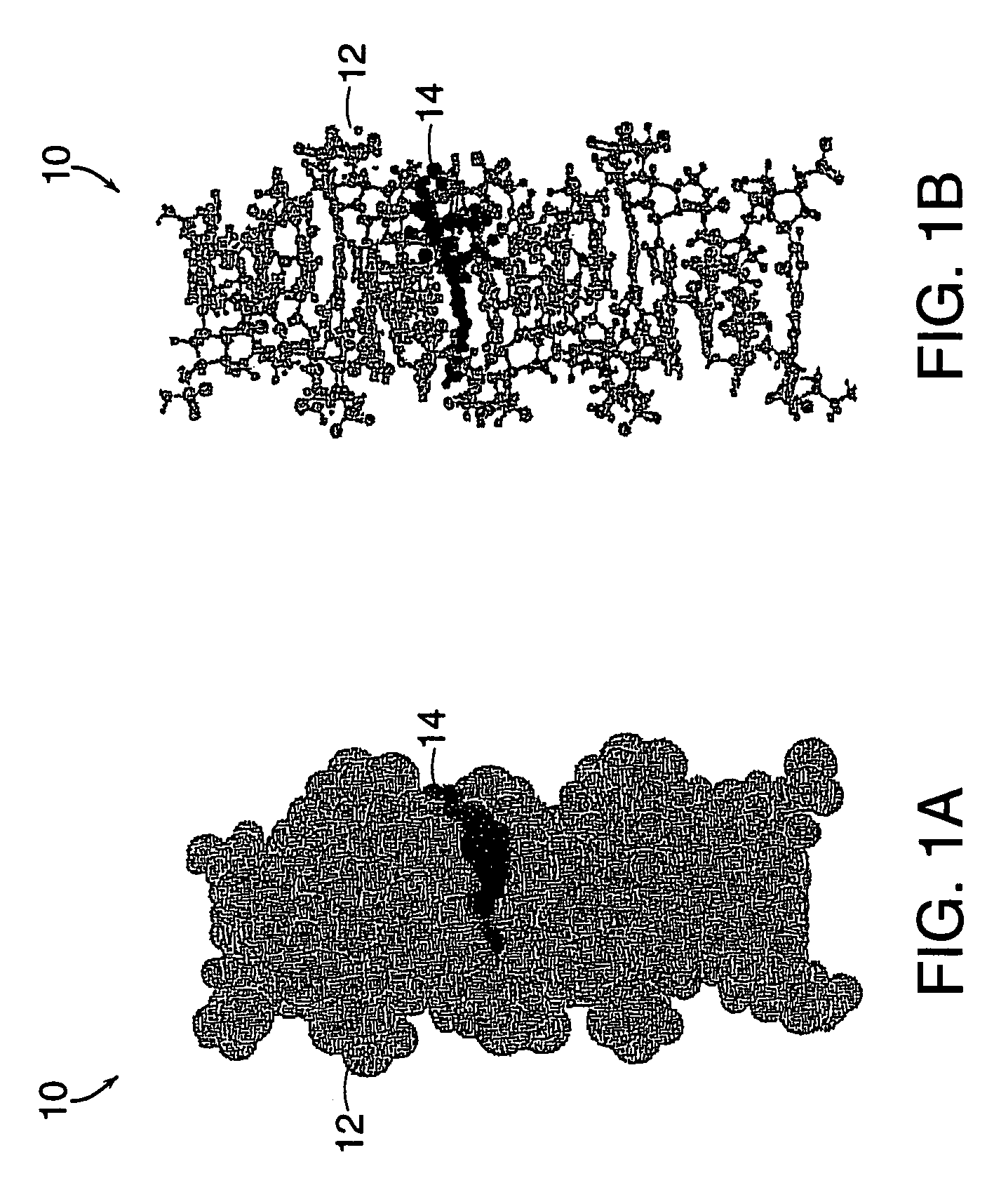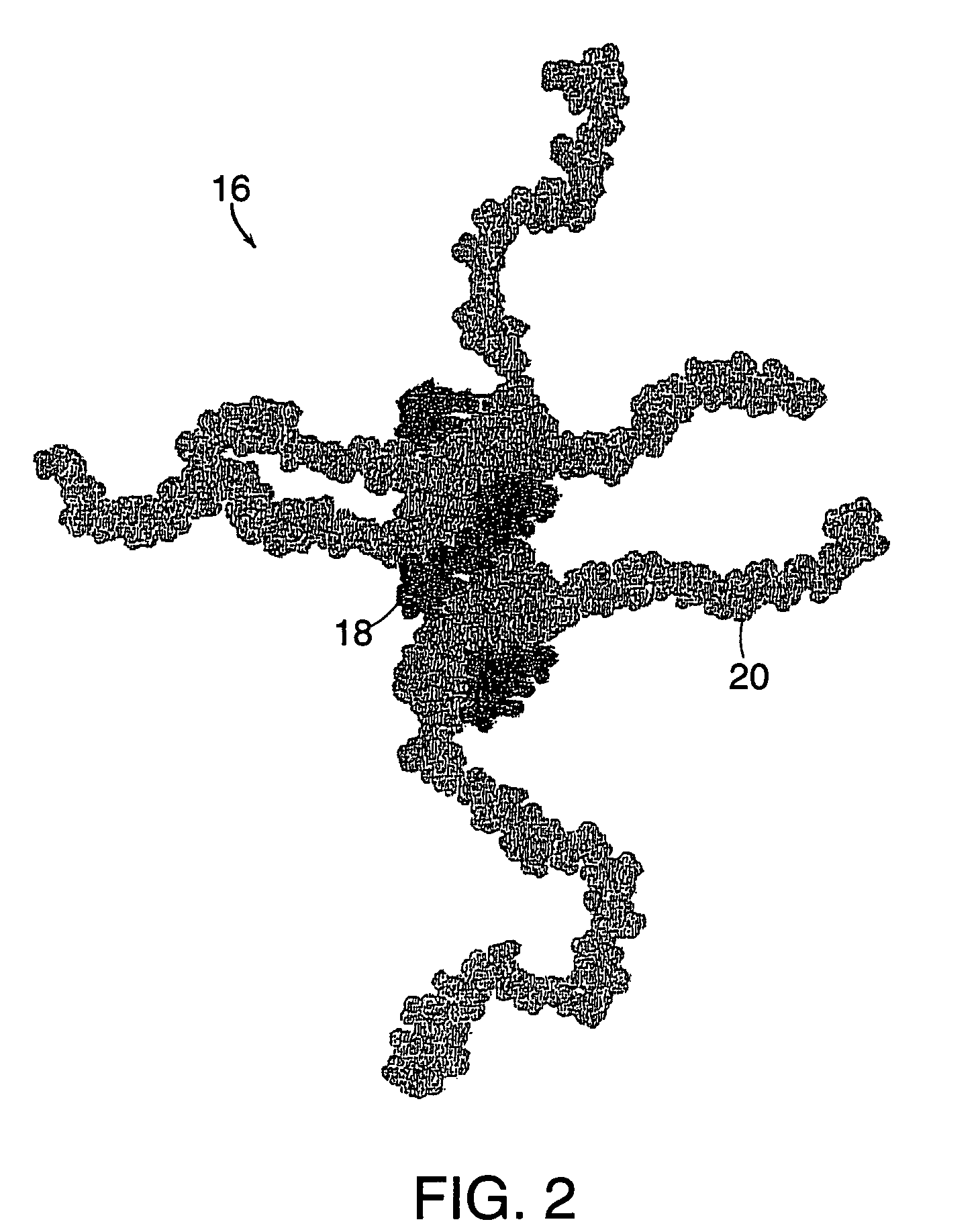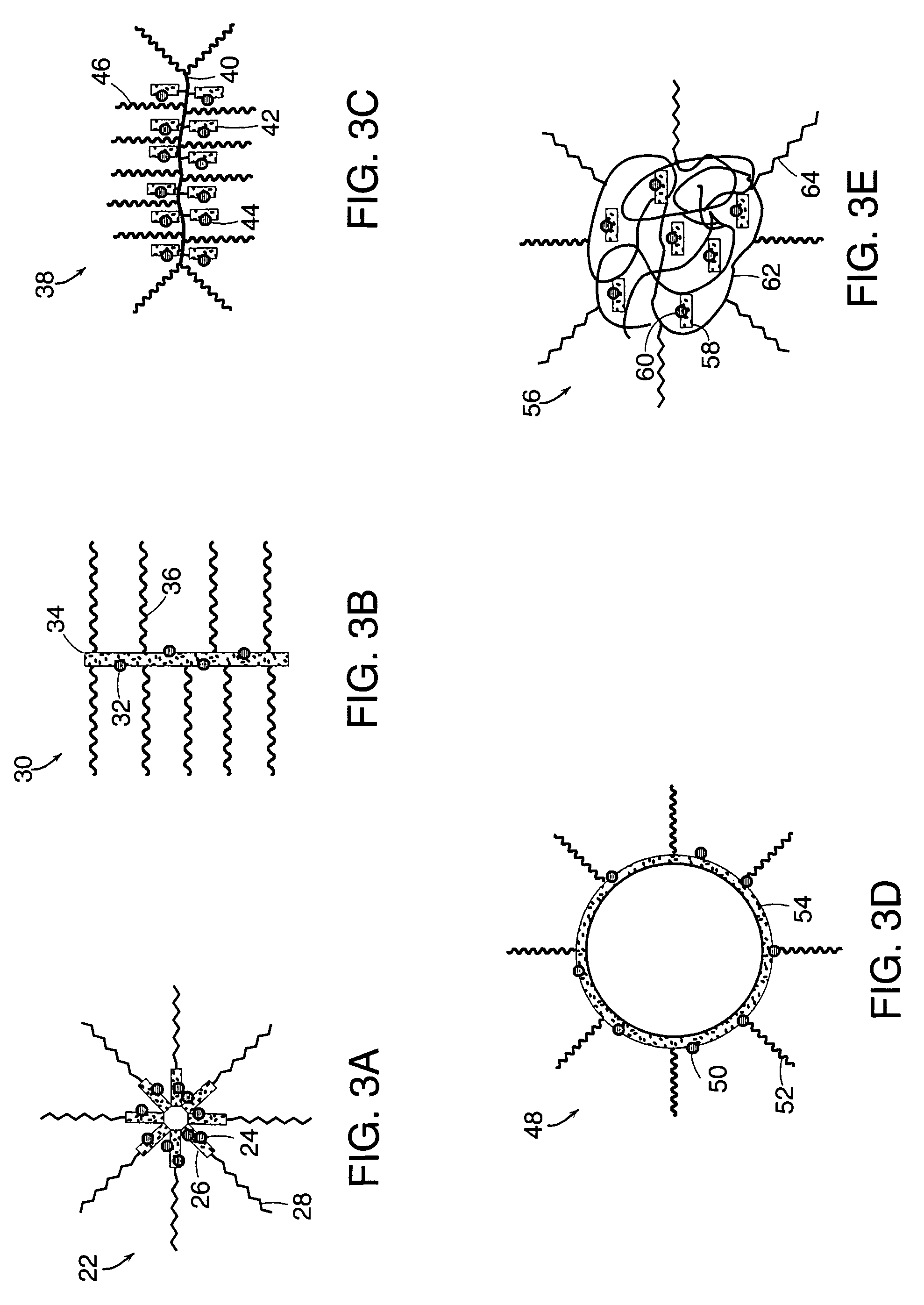Drug-carrier complexes and methods of use thereof
a drug-carrier complex and complex technology, applied in the field of drug-carrier complexes, can solve the problems of reducing the efficacy of drug delivery, halting the progression of a disease state, and many drugs employed to treat diseases are either insufficiently soluble in aqueous solutions or have adverse side effects, so as to achieve a small size of the drug-carrier complex, improve the safety of pharmaceutical formulations and devices, and improve the effect of biological functionality
- Summary
- Abstract
- Description
- Claims
- Application Information
AI Technical Summary
Benefits of technology
Problems solved by technology
Method used
Image
Examples
example 1
Hybridization of Single-Stranded Oligonucleotides
[0130]Two custom-synthesized single stranded oligonucleotides, 5′ AAA TCT CCC AGC GTG CGC CAT AA 3′ (SEQ ID NO: 1) and 5′ tt AtG GCG CAC GCt GGG AGA ttt 3′ (SEQ ID NO: 2), where t is an amino modified T, were purchased from a commercial source. The oligonucleotides were dissolved, 10 mg / ml each, in 50 mM sodium phosphate buffer solution (PBS) with pH=7. Equimolar amounts of the above solutions were mixed at ambient temperature (25° C.). The resultant solution (total volume 22 μl) was transferred to a capped 1 ml vial, and the vial was heated to a 95° C. in a 100 ml water bath for 10 minutes. Then the bath was allowed to cool down to 25° C. The resultant product, a double-stranded oligonucleotide, was purified by size exclusion HPLC in water and lyophilized. Yield: 91%.
example 2
Formation and Isolation of Carrier-Drug Complex
[0131]An oligonucleotide with arbitrarily chosen 18-base sequence, 5′CGT CGA CGT CGA ATA TAC GC (SEQ ID NO: 3), and a complementary 5′-amino modified oligonucleotide 5′GC GTA TAT TCG ACG TCG ACG (SEQ ID NO: 4) were purchased from a commercial vendor. To form a double stranded oligonucleotide, the single-stranded oligonucleotides were hybridized and lyophilized as described in Example 1. The resultant double stranded oligonucleotide was stable at ambient (25° C.) and body temperature (37° C.).
[0132]Doxorubicin was dissolved in water at 0.2 mg / ml at pH=5. The double-stranded oligonucleotide was dissolved in water at 2 mg / ml without pH adjustment. The solutions, 0.1 ml each, were mixed. Subsequently, 0.3 ml of PBS, pH=7, were added, and the resultant solution was incubated at ambient temperature for 10 minutes. After the incubation, the reaction mixture was purified by gel chromatography on Sephadex G-25 in water. Doxorubicin elution was m...
example 3
Drug-Carrier Adduct with High Drug Content
[0133]Drug-carrier adduct with a high drug content was prepared essentially as described in Example 2, using the same double stranded oligonucleotide and doxorubicin:oligonucleotide ratio 1:5 (w / w), which corresponds to approximately one doxorubicin molecule per four base pairs. The resultant adduct was purified by gel chromatography (PD-10 column, water) and lyophilized. Yield: 98±2%.
PUM
| Property | Measurement | Unit |
|---|---|---|
| size | aaaaa | aaaaa |
| hydrodynamic size | aaaaa | aaaaa |
| diameter | aaaaa | aaaaa |
Abstract
Description
Claims
Application Information
 Login to View More
Login to View More - R&D
- Intellectual Property
- Life Sciences
- Materials
- Tech Scout
- Unparalleled Data Quality
- Higher Quality Content
- 60% Fewer Hallucinations
Browse by: Latest US Patents, China's latest patents, Technical Efficacy Thesaurus, Application Domain, Technology Topic, Popular Technical Reports.
© 2025 PatSnap. All rights reserved.Legal|Privacy policy|Modern Slavery Act Transparency Statement|Sitemap|About US| Contact US: help@patsnap.com



